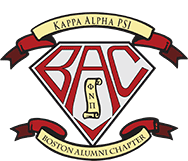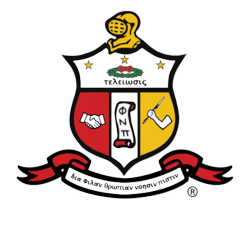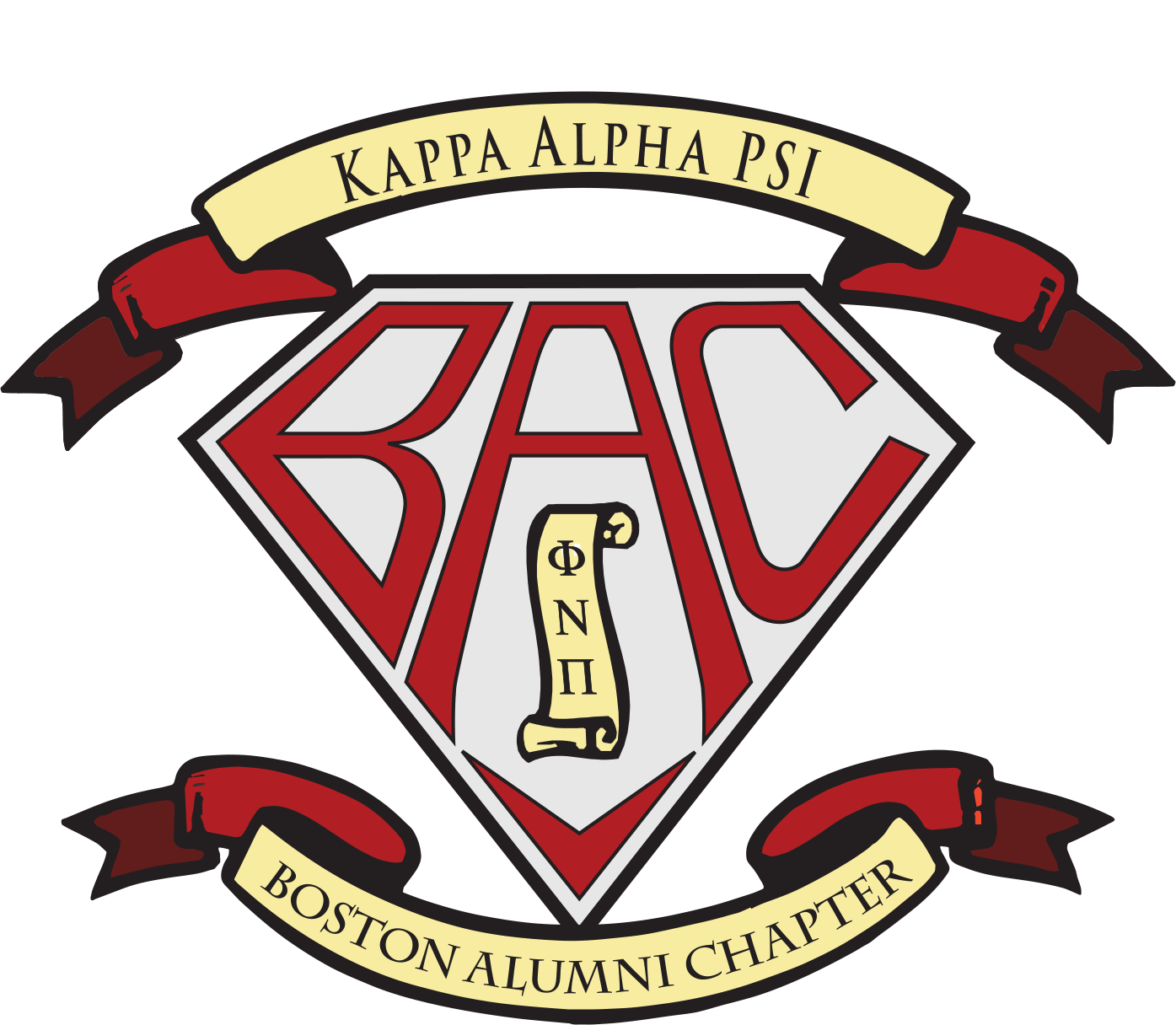On Thursday, January 5th, in the year 1911, the noble Kappa Alpha Ps®i Fraternity, Inc., was founded on the campus of Indiana University, Bloomington, Indiana. Kappa Alpha Psi®, a college Fraternity, now comprised of functioning Undergraduate and Alumni Chapters on major campuses and in cities throughout the country, is the crystallization of a dream. It is the beautiful realization of a vision shared commonly by the late Revered Founders:
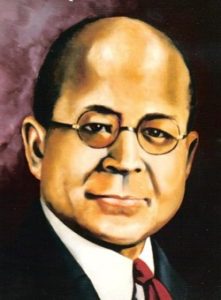
Founder Elder Watson Diggs, was quiet, polished, scholarly, a prolific writer, and commonly referred to as ‘the Father of Kappa’. He was born in Hopkinsville, Christian County, Kentucky, on December 23, 1883, and was the eldest son of three children. Diggs and his brother (William Ellis) and sister (Effie) were reared by their mother, Cornelia.
He received a one-room school education in Louisville, Kentucky, where he helped teach the younger children. Following graduation from Indiana State Normal School in the spring of 1908, Diggs enrolled at Howard University in 1909. While a student there, he developed a friendship with fellow Hoosier, Byron K. Armstrong.
During the summer of that year, Byron Armstrong visited his cousin, Irven Armstrong at Indiana University. Bryon was so impressed that he persuaded Diggs to enroll with him in the fall. Diggs enrolled at Indiana University in the fall of 1910 and was the first African-American to graduate with an A.B. degree from Indiana University’s School of Education in 1916. He subsequently earned his Master’s degree in Education from Howard University in 1944.
Diggs was an educator who held teaching positions and served as principal at public schools throughout Indiana. Diggs was married on three occasions (Clara Bell-Smith, Elizabeth Byrd, and Lyla P. Roberts). Clara Bell and Lyla were both teachers and Diggs assumed Clara Bell’s teaching responsibilities once they became married since female teachers were not permitted to teach in the state of Indiana at that time. Clara Bell and Elizabeth preceded Diggs in death and Lyla died less than 30 days after Diggs passed.
When the U.S. made its declaration in World War I against Germany, Diggs resigned as principal and entered the nation’s first Negroes Officers Training Camp at Fort Des Moines, Iowa, and was commissioned a First Lieutenant. After serving in Europe with the 368th Infantry, he rose to the rank of Captain in the Army Reserve Officers Training Corps. Diggs also was a past commander of the American Legion. Subsequent to the war, Diggs was instrumental in having the Indiana Constitution amended to permit Negro enlistment in the Indiana National Guard.
Diggs was an active member of the First Baptist Church of North Indianapolis; a past commander of the Edward S. Gaillard Post of the American Legion; a member of the History Committee of the Indianapolis Public Schools; a member of the Leadership Training Committee, Boy Scouts of America; a worker in the YMCA; and during the late war served on the Executive Committee of the USO. Diggs was also a member of Central Lodge No. 1, Indianapolis, Indiana under the auspices of the Most Worshipful Prince Hall Grand Lodge of Indiana.
Based on the hostile attitude and circumstances facing Blacks at Indiana University, Diggs decided to establish a fraternity on campus to give African-Americans support and sanctuary based on high Christian ideals and the purpose of achievement. Diggs assisted Byron & Irven Armstrong in designing the Coat of Arms, assumed responsibility for preparing the initiation ceremonial forms, completed the fraternity’s constitution, and took a course in Greek heraldry and mythology to ensure the fraternity was rooted in authenticity. He was one of two Founders who pawned his watch to pay for the Fraternity’s incorporation fee.
Diggs wrote the lyrics to the Kappa Hymn. Additionally, he established the Kappa Alpha Nu Journal, the first periodical of any national Black college fraternity. He served as Grand Polemarch for the first six years of the fraternity’s existence. He also served as a Grand Board Member and as Grand Historian. He also established several of the initial undergraduate chapters in addition to the Indianapolis (IN) Alumni Chapter. Diggs was awarded the first Past Grand Polemarch’s medal and the first Laurel Wreath. He also assisted in writing The 1928 Handbook of Kappa Alpha Psi.
The Elder Watson Diggs Award, the second-highest award available to celebrate a member’s achievements or service to the fraternity is dedicated in his name. The Elder W. Diggs Memorial at Indiana University was constructed in his honor in 1962. Diggs died on November 8, 1947. Following his death, School #42 was named in his honor where he served as principal for 26 years. Diggs is laid to rest at Crown Hill Cemetery, Indianapolis, Indiana.
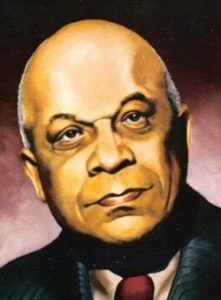
Founder Byron Kenneth Armstrong, affectionately known as “Boomski”, was a scholar, imaginative and outspoken. He was born in Westfield, Hamilton County, Indiana, on April 8, 1892, was one of five children, and was the cousin of 2nd Grand Polemarch, Irven Armstrong.
Armstrong enrolled at Howard University in 1909, met Elder W. Diggs, and together, they transferred to Indiana University in the fall of 1910 where he studied philosophy, mathematics and sociology. He graduated from Indiana University with an A.B. degree in the fall of 1913. Armstrong subsequently earned an M.A. degree from Columbia University in 1914 and was decreed a Doctor of Philosophy degree by the University of Michigan in 1940. He held teaching positions as a professor at universities in Florida, Indiana, Kansas, Maryland and Michigan and served as Dean in Maryland and Oklahoma.
During World War I, he was an investigator for the Department of Labor. He subsequently worked as Personnel Director for Chrysler Motors for 22 years.
Armstrong was one of the primary potent forces behind the founding of Kappa Alpha Nu. He created the motto, assisted Diggs in preparing the Coat of Arms and produced the fraternity badge. He suggested the Fraternity should reward members’ outstanding achievements with a Laurel Wreath. He served the fraternity as the 1st Grand Strategus, 5th Grand Historian and as a Grand Board Member. He also established the Beta, Theta, Xi, Alpha Pi, Gamma Xi, Chicago (IL), Langston (OK) and Tulsa (OK) Alumni Chapters. Armstrong assisted in the writing of the “1928 Handbook of Kappa Alpha Psi”. He also authored “Crossing the Jordan and Beyond” and served as Editor of the Journal.
Armstrong was awarded the 6th Laurel Wreath. The Byron K. Armstrong Scholars Award, the only Grand Chapter award available to fraternity undergraduate members for outstanding achievement, is named in his honor. Armstrong died June 28, 1980, and is buried at Inglewood Cemetery in Inglewood, California.
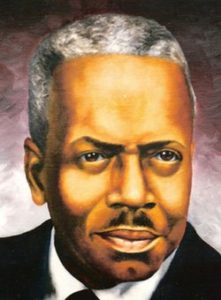
Founder Ezra Dee Alexander, an outgoing and dedicated worker, fondly known as “Dee”, was born in Monroe County, Bloomington, Indiana on July 18, 1891, and was the second eldest of seven children.
Alexander graduated from Bloomington High School in 1910. He matriculated to Indiana University in the fall of 1910 and graduated from Indiana University in 1917 with an A.B. degree. Prior to graduation, he held positions as a teacher and principal at Indiana public schools. He received his M.D. degree from the Medical School of Indiana University in 1919. Alexander served an internship at Provident Hospital in Chicago in 1920. Alexander served in the Army Medical Corps during WWI and as a medical examiner during WWII. He practiced medicine in Indianapolis for nearly 50 years.
In 1920, he was married to Mary Hunter, a teacher in the Indianapolis Public School system. They had a son, Ezra D. Alexander Jr., and a daughter, Dorothy Alexander. He later married Leota Snorden in 1961.
Alexander served 22 years as a non-voting member of the Grand Board of Directors to fulfill a requirement of the Constitution and Statutes that at least one of the directors was an Indiana resident. Alexander presented and dedicated the new KAΨ flag at the 47th Grand Chapter Meeting (1957). He was also one of two Founders who helped establish the Chicago (IL) Alumni Chapter and one of three Founders who helped establish the Indianapolis (IN) Alumni Chapter. His affiliation with the Indianapolis Alumni Chapter lasted until his death, September 29, 1971. He is buried at Crown Hill Cemetery in Indianapolis, Indiana.
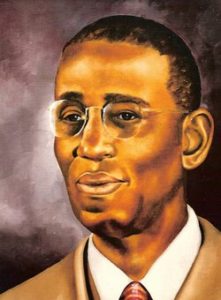 Founder Henry Tourner Asher, an unassuming, dependable supporter of Negro youth, equal rights, higher education and religious affairs and son of a Baptist Minister, was born in Owensboro, Kentucky, on June 30, 1890, and was the eldest of seven children.
Founder Henry Tourner Asher, an unassuming, dependable supporter of Negro youth, equal rights, higher education and religious affairs and son of a Baptist Minister, was born in Owensboro, Kentucky, on June 30, 1890, and was the eldest of seven children.
He moved to Bloomington, Indiana, attended public schools and graduated from the Bloomington High School in 1910. He enrolled at Indiana University in 1910, where he received the degree of Bachelor of Arts in 1914. He became an instructor at Lincoln Institute at Jefferson City, Missouri from 1914-1915. In 1915, he enrolled in a graduate program at Wisconsin and subsequently at the University of Illinois, but transferred to the University of Minnesota, where he earned his MA degree in 1917. He received the degree of LL.B. at the Detroit College of Law in 1928. Asher subsequently married Celia Craig in 1936 and later met and married his second wife Bessie.
Asher served a year overseas in France during World War I and attained the rank of corporal. He was assigned to the 809th Pioneer Infantry unit of the U.S. Army. Upon completion of his service in 1919, he chose to give up a possible teaching career at Wilberforce University for one in real estate. He subsequently ended up in Detroit, where he decided to enter the postal service.
Asher, along with Founders Edmonds and Blakemore was the first three freshman initiates of the Alpha of Kappa Alpha Nu. Although not a charter member of the Detroit (MI) Alumni Chapter, he was among the first to affiliate with the chapter in 1920.
Asher was an active member of several organizations including the NAACP, the Elks and the Veterans of Foreign Wars. He spent the remainder of his life in Detroit, Michigan, where he died on March 5, 1963. He is buried at Detroit Memorial Park (East) in Warren, Michigan.
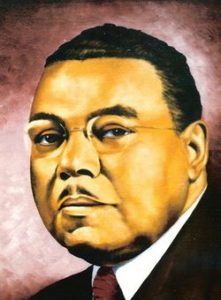 Founder Marcus Peter Blakemore, affectionately known as “Blakie”, a man of deep religious convictions and quiet confidence, contributed greatly to education, his community, his church, hospitals, and his Fraternity, was born in Franklin, Indiana on January 3, 1889, and was the eldest of four children.
Founder Marcus Peter Blakemore, affectionately known as “Blakie”, a man of deep religious convictions and quiet confidence, contributed greatly to education, his community, his church, hospitals, and his Fraternity, was born in Franklin, Indiana on January 3, 1889, and was the eldest of four children.
Blakemore moved with his family to Anderson, Indiana where he attended public schools and graduated from high school in 1909. He entered Indiana University the following year. After leaving Indiana University in the spring term of 1912, he organized the Electric Engineering Company, which he operated until he enlisted with the U.S. Army in World War I. Blakemore served in the U.S. Army as the rank of Private with the 30th Company, 154th Depot Brigade. He was honorably discharged in August of 1918 and married Azalea Hall the following month. They had one daughter, Elizabeth.
He earned his Bachelor of Science degree from the University of Pittsburgh and graduated from its Dental School with the DDS degree in 1923. In 1949, Blakemore became the first Black to receive the MS degree in Prosthetic Dentistry from the University of Pittsburgh Dental School.
Blakemore was a member of national and local Dental Societies and a staunch member of Ebenezer Baptist Church, having served as a trustee and a clarinet soloist.
Blakemore was a roommate of Byron K. Armstrong in the rooming house of Molly Spaulding. He was one of the two Founders who pawned his watch to help raise the Fraternity’s incorporation fee. Blakemore was one of the first three freshmen initiates of Kappa Alpha Nu. He wired the first Fraternity house for electricity, the first Negro home ever wired for electricity in Bloomington. He was a charter member of the Pittsburgh (PA) Alumni Chapter and was instrumental in the establishment of the Beta Epsilon Chapter.
Blakemore maintained his practice of dentistry in Pittsburgh, Pennsylvania for 35 years until his death, October 9, 1959, and is buried at Allegheny Cemetery in Pittsburgh, Pennsylvania.
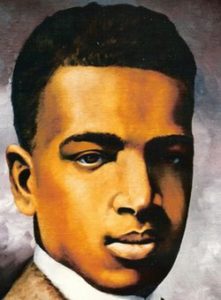 Founder Paul Waymond Caine, the consummate entrepreneur, chef before his time, always friendly and displaying a pleasant disposition, was born in Greencastle, Indiana on May 17, 1890. He was long thought to be an only child but now known to have a half-brother.
Founder Paul Waymond Caine, the consummate entrepreneur, chef before his time, always friendly and displaying a pleasant disposition, was born in Greencastle, Indiana on May 17, 1890. He was long thought to be an only child but now known to have a half-brother.
Caine attended Greencastle public schools and enrolled at Indiana University sometime between 1909 and 1910 as a business major. He was adept at cooking and he honed those skills while working at DePauw University, where he worked as a cook in the sorority houses prior to enrolling at Indiana University. He was a fine caterer and was in demand by the White fraternities on campus and kept many of the Founding Brothers from hunger.
Because of a disastrous fire in the Phi Gamma Delta Fraternity house in which he was employed, he lost all of his personal belongings during his freshman year. Caine persevered but was eventually was forced to withdraw from school during his Sophomore year, the winter quarter of 1911. He subsequently set up the Caine Catering Company in his hometown and continued his catering business in various cities including Gary, Indiana, Peoria, Chicago and Evanston, Illinois. Caine opened a restaurant and bakery while residing in Peoria, Illinois. He also published a catering book, Artistic Dishes copyrighted in 1919 by the Hurst Publishing Company. He became well known in the culinary circles and was well sought after to teach and conduct lectures.
While residing in Gary, Indiana, Caine took up work at the Gary Steel Mill as a laborer and married Jeanette E. Wilson in 1921. While residing in Chicago in the early-mid 1920s, Caine assisted to organize and furnish the Chicago (IL) Alumni Chapter’s new ‘Kappa Kastle’.
Caine helped the other Founders in organizing Kappa Alpha Nu. He was among the first to be initiated into the Fraternity. He was also instrumental in setting up the Beta, Gamma, Delta, Zeta and Theta Chapters.
He later acquired a 2nd hand goods clothing store and dry-cleaner business in Rockford, Illinois. He was burned during an explosion of gaseous materials as he worked in his dry cleaning business. Caine subsequently died of pneumonia on April 15, 1931, from injuries sustained from the fire. During Conclave, the highest Grand Chapter award available to alumni chapters for outstanding achievement, the Paul W. Caine Award, is named in his honor. He is buried at Greenwood Cemetery in Rockford, Illinois.
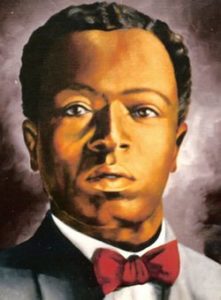 Founder George Wesley Edmonds, witty in nature and an enigma to most in the Fraternity was born in Knight Township, Vanderburgh County, Indiana on August 13, 1890, as the eldest of two sons. He attended the Carver Elementary School and Clark High School in nearby Evansville, Indiana and enrolled at Indiana University in the fall of 1910. He joined nine other students in founding Kappa Alpha Nu Fraternity. Founder Edmonds was listed as the Corresponding Secretary in the articles of incorporation of the Grand Chapter of Kappa Alpha Nu. He was one of the three freshmen, along with Asher and Blakemore, who were the first initiates of the Alpha of Kappa Alpha Nu.
Founder George Wesley Edmonds, witty in nature and an enigma to most in the Fraternity was born in Knight Township, Vanderburgh County, Indiana on August 13, 1890, as the eldest of two sons. He attended the Carver Elementary School and Clark High School in nearby Evansville, Indiana and enrolled at Indiana University in the fall of 1910. He joined nine other students in founding Kappa Alpha Nu Fraternity. Founder Edmonds was listed as the Corresponding Secretary in the articles of incorporation of the Grand Chapter of Kappa Alpha Nu. He was one of the three freshmen, along with Asher and Blakemore, who were the first initiates of the Alpha of Kappa Alpha Nu.
After Edmonds returned home for the summer of 1911, he never returned to school. Instead, he worked in the coal mines and railroads of Vanderburgh County for many years. Edmonds also lived in Lake County, Indiana (1917-18) and Warwick County, Indiana (1942).
Edmonds married Willa Mae Forte and settled in Stevenson, Indiana. They became the parents of one son, Noel. Founder Edmonds died on June 13, 1962.
Unfortunately, little more is known of Edmonds because of his premature withdrawal from school. The Fraternity had attempted to locate Edmonds for several years. These efforts were hampered by several factors. The circumstances of his life prevented him from moving into the circles of higher education. Edmonds’ lack of contact with college colleagues prevented him from knowing the organization he assisted to found. In 1915, the Fraternity changed its name from Kappa Alpha Nu to Kappa Alpha Psi. Attempts to locate him were also hindered due to his last name been misspelled in the Fraternity’s records. For these reasons, Edmonds’ location was unknown to the Fraternity for sixty-seven years. In 1975, Founder Edward G. Irvin urged the Brothers to intensify their search for Edmonds. Edmonds’ burial site was finally confirmed in 1978. He is buried at Oak Hill Cemetery in Evansville, Indiana.
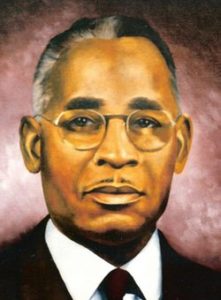 Founder Guy Levis Grant, small in stature, but a giant in charitable endeavors and preserver of history, was born in New Albany, Indiana on April 9, 1891, and was the third of thirteen children, five of which became members of the Fraternity. When his father died, he became head of household and assumed responsibility for educating himself and his siblings.
Founder Guy Levis Grant, small in stature, but a giant in charitable endeavors and preserver of history, was born in New Albany, Indiana on April 9, 1891, and was the third of thirteen children, five of which became members of the Fraternity. When his father died, he became head of household and assumed responsibility for educating himself and his siblings.
Grant attended public schools in his hometown, and graduated from Scribner High School in 1909, and later entered Indiana University. While there, he majored in chemistry, graduating with the A.B. degree in 1915. In 1920, he received the D.D.S. degree from Indiana Dental School, then a part of Indiana University; he practiced dentistry in Indianapolis for over 50 years. In 1929, he married Laura Hammons. He was a veteran of World War I, was the Founder and President of Recorder Charities, and active in several civic, professional and business organizations. He was also a member of the Second Baptist Church in Indianapolis.
Grant helped to establish the Beta Chapter and joined Founders Diggs and Alexander to help establish the Indianapolis (IN) Alumni Chapter in 1920 and was its first Polemarch. He served several terms as a non-voting member of the Grand Board of Directors and as Grand Historian. For years, Grant gathered bits and pieces of Kappa history to accumulate a recorded history for posterity. This archive collection became the factual supportive base for the written account of the Fraternity’s history.
The 2nd Edition of the Story of Kappa Alpha Psi was dedicated to him. Following 16 years of dedicated service as the Grand Historian, the Fraternity conferred the title of Grand Historian Emeritus upon him at the 54th Grand Chapter Meeting in 1967. The Guy Levis Grant Award is named in his honor to undergraduate members of the fraternity who exhibit extra meritorious contributions to the Fraternity’s advancement. Grant died on November 11, 1973, and is buried at Crown Hill Cemetery in Indianapolis, Indiana.
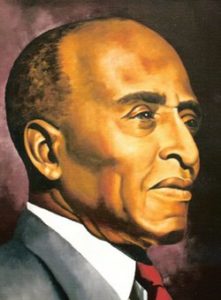 Founder Edward Giles Irvin, a civic and religious leader, journalist and entrepreneur, was born August 13, 1893, in Spencer, IN and was the seventh of nine children of an African Methodist Episcopal minister. Following graduation from Kokomo Indiana High School in 1910, he enrolled at Indiana University the same year. While attending Indiana University, at only 17 years of age, Irvin was the youngest one of ten Black students who assisted to found Kappa Alpha Psi® Fraternity, Inc., in which Irvin served on the fraternity’s Incorporation Committee.
Founder Edward Giles Irvin, a civic and religious leader, journalist and entrepreneur, was born August 13, 1893, in Spencer, IN and was the seventh of nine children of an African Methodist Episcopal minister. Following graduation from Kokomo Indiana High School in 1910, he enrolled at Indiana University the same year. While attending Indiana University, at only 17 years of age, Irvin was the youngest one of ten Black students who assisted to found Kappa Alpha Psi® Fraternity, Inc., in which Irvin served on the fraternity’s Incorporation Committee.
Irvin and the other Founders endured and persevered acts of racial hatred and hostility as students, then organized this fraternity dedicated to the principles of achievement and to alleviate the isolation and raise the sights of Black undergraduates. Irvin left the University following the spring term of 1911.
After leaving the University, Irvin pursued a career in journalism until World War I. While serving the U.S. Army during the War, he was a Combat Medic and was cited for bravery for his actions with the Expeditionary Forces in France. He served on the Selective Service Board during WWII and the Korean War. He received the 2nd highest medal that is given by this country for valor. He also received two Distinguished Service Awards, from President Truman and Eisenhower respectively.
Following his honorable discharge from the Army, he met Maywilla, who became his wife. He subsequently moved to Indianapolis and was on the staff of the Indianapolis Freeman, the first Negro newspaper in the nation with pictures. In 1922, he established the Shining Star, a weekly newspaper based in Anderson, IN. He subsequently moved to Gary, IN in 1923, to become the editor of the Gary Sun newspaper. Irvin moved to Chicago, IL, in 1928, to work as the sports editor for the Chicago Daily Bulletin newspaper. After it collapsed, he worked at the U.S. Post Office and became the owner and operator of the Afro-American Manufacturing Company a distributor of candy, novelties and specialty items. Irvin was a long-time member of the Chicago (IL) Alumni Chapter.
Irvin enjoyed sporting events and sponsored basketball and track events at small schools in Indiana. Deeply rooted in the community, he was also an active member of the Masonic order, the Odd Fellows, and the St. James African Methodist Church. He was also a trustee of St. James A.M.E. Church in Chicago and founded and edited the lay newspaper, Voice of the A.M.E. Laymen.
Over the years, he received many awards, but the one he cherished the most was the Laurel Wreath Award, the highest award available to a member of Kappa Alpha Psi® Fraternity, Inc. for meritorious achievement. It was bestowed upon him in 1976 at the 60th Grand Chapter Meeting of Kappa Alpha Psi® Fraternity, Inc. Irvin was the 24th Laurel Wreath Laureate and the third Founder to receive this coveted Fraternity award. The Fraternity named the Undergraduate Chapter of the Year Award in his honor, the Edward Giles Irvin Award of Kappa Alpha Psi®. It is bestowed upon the most outstanding Undergraduate Chapter.
The Fraternity’s last living Founder died on November 4, 1982, and is survived by his daughter, Dorothy Mayweather. He is buried at Burr Oak Cemetery, in Alsip, Illinois, a southwest suburb of Chicago, Illinois.
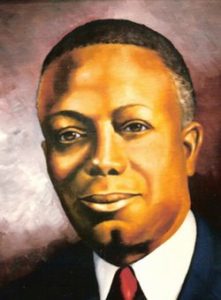 Founder John Milton Lee, a scholar, a loyal and tireless worker for the growth of the Fraternity and because of his idealist character was commonly referred to as ‘a dreamer’, was born in Danville, Indiana on September 7, 1890, and was the third of four children.
Founder John Milton Lee, a scholar, a loyal and tireless worker for the growth of the Fraternity and because of his idealist character was commonly referred to as ‘a dreamer’, was born in Danville, Indiana on September 7, 1890, and was the third of four children.
He attended public schools in Danville and enrolled at Indiana University in 1910. He completed three years of pre-medical work before leaving the university. In 1914, he enrolled at the University of Pennsylvania but withdrew for health reasons. In 1915, he became a student at Temple University but was compelled to leave due to a death in the family.
Lee enlisted in the Army in 1917. He was a non-commissioned officer assigned to Battery F, 349th Field Artillery Regiment, 167th Field Artillery Brigade of the 92nd Division. The Division organized at Fort Dix (New Jersey) in November 1917. The Field Artillery component was the first Negro Artillery Regiment in the history of the military. Lee subsequently served overseas as a Sergeant First Class and Gunner. His battery enjoys the unique distinction of having been the first Battery of Negro Artillerymen ever to open fire upon an enemy. He was an associate editor of Modern Artillerymen, the official record of Battery F.
Lee helped organize, and for several years was president of the Fairview Golf Club, the first Negro Golf Club in Pennsylvania. For two years, he was the editor of The Golfer, the monthly publication of the Fairview Golf Club. In 1931, he was married to Mary Walker Robinson. Vocationally, he was engaged in several enterprises. For eight years, Lee conducted a successful catering business in Philadelphia; he organized and served as Vice-President and Secretary of the Mutual Emergency Union, a mutual aid company in Philadelphia. He was also a member of the Board of Managers of the Columbia Community Branch of the YMCA.
Lee was a close confidant of Founder Diggs and was a source of comfort when Diggs lost his first wife. He contributed greatly to the vision and development of the fraternity in its early years. The articles of incorporation listed Lee as the Secretary of Kappa Alpha Nu. He assisted in the development of the emblems of Kappa Alpha Nu. Lee helped to establish the Epsilon, the Lambda and the Philadelphia (PA) Alumni Chapters. He served as interim Polemarch until the Philadelphia Alumni Chapter members elected its first Polemarch.
At the time of his death, January 3, 1958, he was employed by the Commonwealth of Pennsylvania. He is the only Founder to be cremated and his ashes are preserved in an urn located at International Headquarters in Philadelphia, Pennsylvania.
